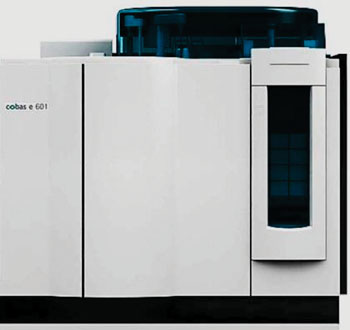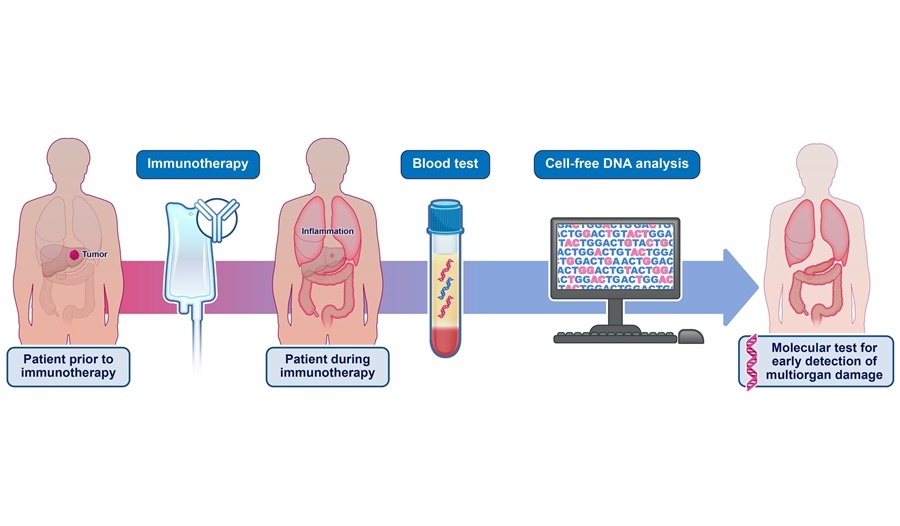Measurement of Calcium-Binding Protein Diagnoses Intracranial Hemorrhage
By LabMedica International staff writers
Posted on 20 Jul 2015
Cranial computed tomography scans and hospital admission are increasingly performed to rule out intracranial hemorrhage in patients after minor head injury (MHI), particularly in older patients and in those receiving antiplatelet therapy.Posted on 20 Jul 2015
This leads to high radiation exposure and a growing financial burden, so a blood test for the astroglial-derived protein S100B has been developed as a reliable negative predictive tool for intracranial bleeding in patients after MHI, when they are older than 65 years or being treated with antiplatelet drugs such as low-dose aspirin or clopidogrel.

Image: The cobas e601 module immunology analyzer (Photo courtesy of Roche diagnostics).
Scientists at the Medical University of Vienna (Austria) conducted a prospective observational study in two trauma hospitals and a total of 782 patients with MHI who were on medication with platelet aggregation inhibitors (PAIs) or were age 65 years and older, independent of antiplatelet therapy, were included. The median age of the patients was 83 years, and 69% were female. All patients underwent cranial computed tomography (CCT).
Blood was drawn from all patients and laboratory measurements were performed immediately. The time interval between the index event and the blood draw was limited to three hours as this time period is based on the half-life of about 90 minutes for the calcium-binding protein B (S100B) molecule. All blood specimens were processed to serum and the serum S100B levels were determined by electrochemiluminescence immunoassay Elecsys S100 (Roche Diagnostics; Basel, Switzerland) on the Roche cobas e601 and cobas e411 instruments. The analytical range was 0.005µg/L to 39 µg/L and the cutoff was set at 0.105 μg/L.
In the CCT-positive group, 24 patients were diagnosed with subdural, 14 with intracerebral, and 12 with subarachnoid hematoma; no epidural hematoma was found and the median serum S100B concentration was 0.285 μg/L. In the CCT-negative group, 35.3% showed S100B concentrations below the cutoff value of 0.105 μg/L; 64.7% were at or above the cutoff value and the median serum S100B concentration was 0.143 μg/L in this group. Of all 782 patients, 259 (33.1%) showed an S100B value below the cutoff of 0.105 μg/L. Calculation of sensitivity and specificity yielded the following results: 98.0% sensitivity; negative predictive value (NPV) was 99.6%; 35.3% specificity; and positive predictive value (PPV) was 9.4%.
Heinrich Wolfgang Thaler, MD, the lead author of the study said, “We undertook the study with the aim to reduce the workload of medical staff and costs as well as the radiation burden in the management of patients with mild head injuries. We are confident that this study will prove to be useful in achieving these aims.” The study was published on July 7, 2015, in the Journal of Neurosurgery.
Related Links:
Medical University of Vienna
Roche Diagnostics








 (3) (1).png)





